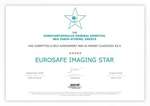Congress:
EuroSafe Imaging 2020
Keywords:
Action 7 - Radiation protection of children, Paediatric, Radiation physics, Radioprotection / Radiation dose, CT, Digital radiography, Dosimetry, Dosimetric comparison, Retrospective, Not applicable
Authors:
S. Triantopoulou, C. Triantopoulou, P. ANGELOGIANNOPOULOU, S. Theocharis, V. Tsapaki
DOI:
10.26044/esi2020/ESI-09839
Background/introduction
Two of the fundamental principles of radiation protection are justification and optimization of exposure in medical radiological practices. These principles have to be applied to all individuals. One important tool for the optimisation is the establishment and regular review of diagnostic reference levels (DRLs). DRLs are defined as “dose levels in medical radiodiagnostic or Interventional Radiology (IR) practices, or, in the case of radio-pharmaceuticals, levels of activity, for typical examinations for groups of standard-sized patients or standard phantoms for broadly defined types of equipment” [1,2].
The establishment of Diagnostic Reference Levels (DRLs) contributes to reducing the high exposure of patients in radiation and it is necessary for all high – dose medical examinations, such as computed tomography (CT) and procedures that require long fluoroscopy times, such as for interventional radiology (IR) [3].
It must be emphasized that the application of justification and optimization is even greater in paediatric patients, as children are far more radiosensitive than adults. Today, the importance of radiation protection of paediatric patients in Radiology is not only widely acknowledged, but also imposed by the European Directive 2013/59 [1]. Recently a new report has been published by the European Commission that describes guidelines for the application of optimization and the establishment of DRLs in children [4]. Therefore the staff of a Radiology Department has to be well-trained and informed in order to be able to admit and handle properly paediatric patients.


